WordPress Glossary Plugin (CMTG) - Localization - Creating Multiple Glossaries in Different Languages
Use Case - Creating a Glossary in Multiple Non-English Languages
Multiple Glossaries
Glossaries of Different Categories | Glossaries of Different Languages
What is This Feature
Version 3.9.10 introduced many language settings to the eCommerce version of the WordPress Glossary plugin. With them, you can create parallel glossaries, one for each language.
Use Case
The use case Creating a Glossary in a Non-English Language is relevant to this feature. It shows also how to create multiple languages, each with its own characters.
Example
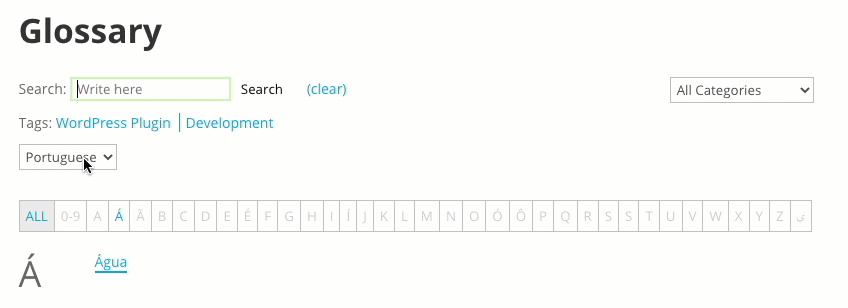
Tip: Great Feature for Dictionaries and eLearning
The widget and the "Language switch widget applies to" setting can be really useful for dictionaries or eLearning sites.
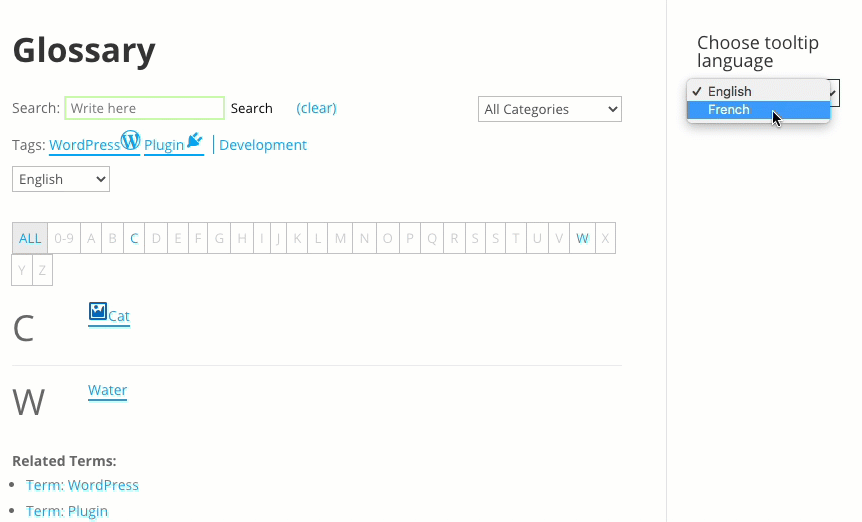
Set up
Step 1 - Turn the Language Mode On
Head to Admin Dashboard → CM Tooltip Glossary Ecommerce → Settings → Ecommerce Settings tab.

Under the Languages section, turn on the option Enable languages and filter Glossary. We'll cover the other settings in a moment.
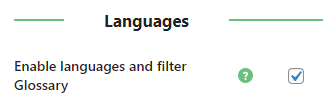
Important Change
While this setting is on, the glossary will only show terms of one language!
Step 2 - Create languages
Head to Admin Dashboard → CM Tooltip Glossary Ecommerce → Languages.
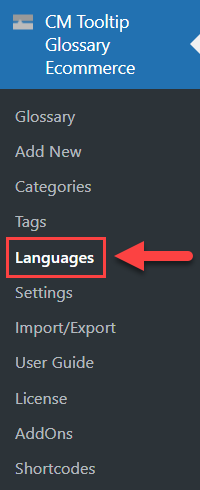
In this screen you can add and manage languages. Notes:
- Add the name of the language. E.g. Hindi, French etc.
- Choose which letters the alphabet contain. This means different languages can have different alphabets.
- Choose if letters in the index alphabetic index should be Uppercase or Lowercase. Note: this option was introduced in version 4.3.8.
- Define the index page front-end labels for each specific language. Note: these labels were introduced in version 4.3.3.
- The "Count" column provides a shortcut of all the terms currently assigned to that language.
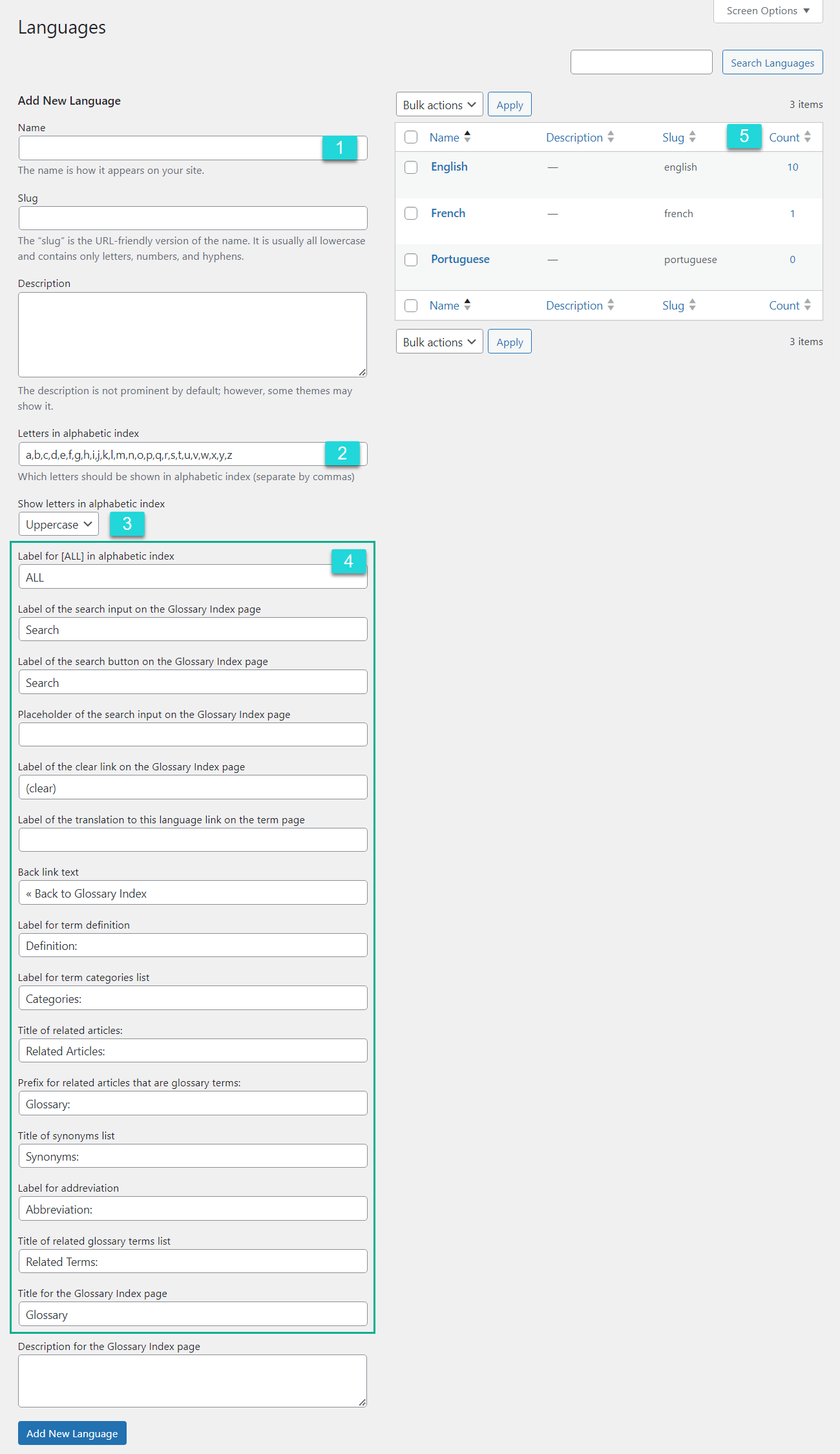
Step 3 - Create unique versions of terms for each language
Each language must have the same version of the term. For example, Water, Eau and Água refer to translations of the same word, so they should be three separate terms.
If you only have one (for instance, Water), create the other ones.
Step 4 - Assign languages to your terms
While creating or editing terms, take notice of the metabox "CM Tooltip - Term Language". It is very important.
There, assign the language of the term you are editing. Then, you select, for each language, the corresponding term.
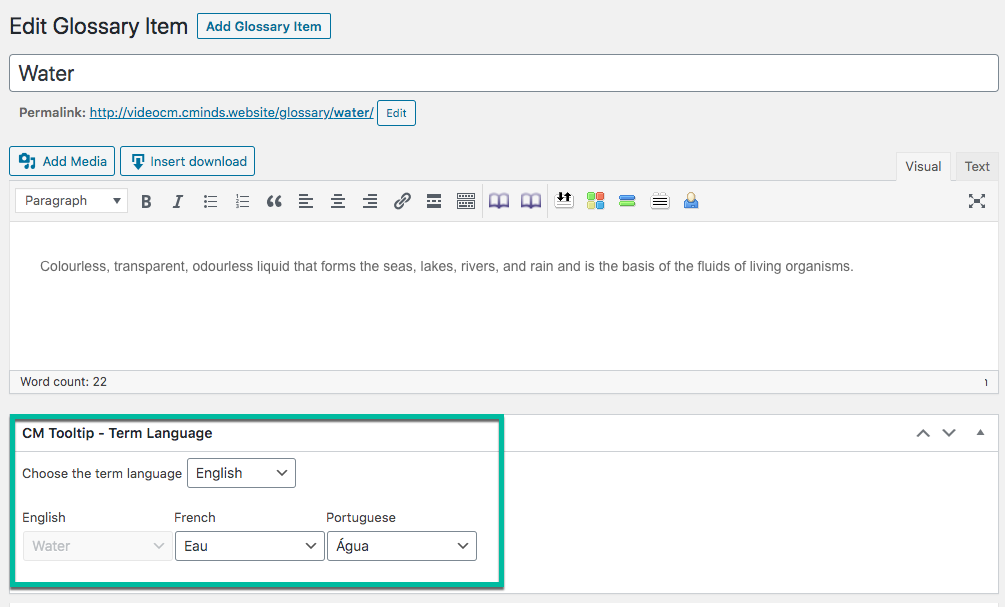
Repeat this step for all relevant terms.
Glossary Language Settings
Now we have multiple glossaries with connected terms. The following settings allow you to decide how the glossary will be affected.
- Default Glossary language - Which language the glossary will be in at first.
Show language dropdown selector on Glossary Index - Show or hide.

Dropdown for choosing languages Language switch widget applies to - The plugin comes with a widget that changes the language of the tooltips. You can choose if, when a user selects a new language, that affects only the current page or the whole site
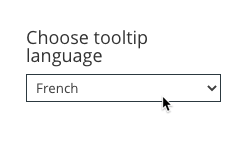
Switch widget - Language in the tooltips - You can force the tooltip to be in a set language.
- Choosing "---" will make the tooltip respect the language to the term.
- Choosing a specific language, on the other hand, will force the tooltip to show the definition of that language.
- Choose languages to show on Index Page - Which languages will be selectable from the dropdown.
Show other languages of the term in the term page - If enabled, shows the definition in all available languages.

Multilingual term page
 |
More information about the WordPress Glossary Plugin Other WordPress products can be found at CreativeMinds WordPress Store |
 |
Let us know how we can Improve this Product Documentation Page To open a Support Ticket visit our support center |



